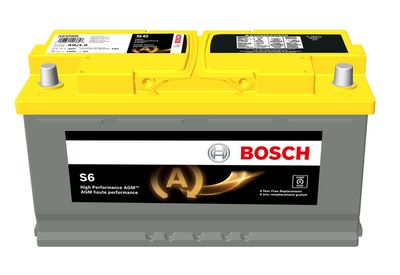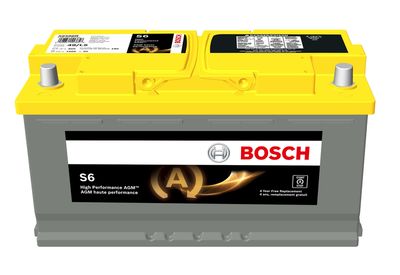Answer
Aug 23, 2024 - 07:55 AM
Assessing the health of a Bosch S6588B battery on a Mercedes vehicle involves a few key steps, including visual inspection, using diagnostic tools, and performing specific tests. Here’s a guide on how to effectively assess the battery's health:
1. Visual Inspection- Check for Corrosion: Look at the battery terminals and connections for signs of corrosion. Corrosion can appear as a white or bluish powder on the terminals, which can interfere with the battery’s performance. Clean the terminals if necessary.
- Inspect the Battery Case: Examine the battery case for any signs of damage, such as cracks, bulges, or leaks. Any physical damage can indicate a compromised battery.
- Ensure Secure Connections: Make sure the battery terminals are securely fastened. Loose connections can cause poor performance or intermittent electrical issues.
- Use a Multimeter: A digital multimeter is a useful tool for checking the battery’s voltage. Set the multimeter to DC voltage and connect the red probe to the positive terminal and the black probe to the negative terminal of the battery.
- Measure the Voltage:
- Fully Charged Battery: A fully charged AGM battery like the Bosch S6588B should read around 12.6 to 12.8 volts when the vehicle is off.
- Undercharged Battery: If the voltage is below 12.4 volts, the battery might be undercharged, which could indicate a problem with the charging system or that the battery is losing its charge.
- Discharged Battery: A reading below 12.0 volts usually indicates a deeply discharged battery, which could point to a weak battery or an electrical drain when the vehicle is off.
- Using a Load Tester: A load test checks the battery’s ability to maintain voltage under a simulated load, similar to what it experiences during engine startup. You can use a specialized load tester, which is available at auto parts stores or can be performed by a professional mechanic.
- Perform the Test:
- Turn off the Engine: Ensure the vehicle is off before starting the test.
- Apply the Load: Connect the load tester to the battery and apply the recommended load (usually about half of the battery’s cold cranking amps, CCA) for about 10-15 seconds.
- Check the Voltage: During the load, the voltage should remain above 9.6 volts. If it drops below this level, the battery may be weak or failing.
- Start the Engine: With the engine running, check the voltage across the battery terminals using the multimeter.
- Measure the Charging Voltage:
- Normal Charging: A healthy alternator should charge the battery at around 13.7 to 14.7 volts. If the voltage is outside this range, there could be an issue with the alternator, voltage regulator, or another part of the charging system.
- Overcharging: If the voltage is above 14.7 volts, the battery may be overcharged, which can shorten its lifespan.
- Parasitic Drain Test: If the battery seems to lose charge when the vehicle is off, you may have a parasitic drain, where something is drawing power from the battery even when the car is off.
- Test for Drain:
- Turn off All Electronics: Ensure all accessories, lights, and systems are off, and close all doors.
- Use a Multimeter: Set your multimeter to the amperage setting and connect it in series with the battery’s negative terminal.
- Measure the Draw: Ideally, the drain should be less than 50 milliamps. If it's higher, there may be an electrical issue or accessory drawing too much power when the vehicle is off.
- Mercedes BMS: Many modern Mercedes vehicles are equipped with a Battery Management System (BMS) that monitors battery health and performance.
- Diagnostic Tool: Use a diagnostic tool that is compatible with Mercedes-Benz vehicles, such as an OBD-II scanner with Mercedes-specific software, to check the BMS for any error codes or issues related to the battery.
- Visit a Mechanic: If you’re unsure about the results of your tests or if the battery seems to be underperforming, it’s a good idea to have a professional mechanic or a Mercedes dealership perform a comprehensive battery and charging system test.
To assess the health of the Bosch S6588B battery in your Mercedes vehicle, start with a visual inspection, then use a multimeter for basic voltage and charging tests. Follow up with a load test to check the battery’s ability to hold a charge under load. If needed, perform a parasitic drain test to check for excessive power draw when the vehicle is off. Utilizing the vehicle’s BMS through a diagnostic tool can also provide valuable insights. Regularly checking these aspects will help ensure your battery remains in good health and can reliably power your vehicle.





Add New Comment